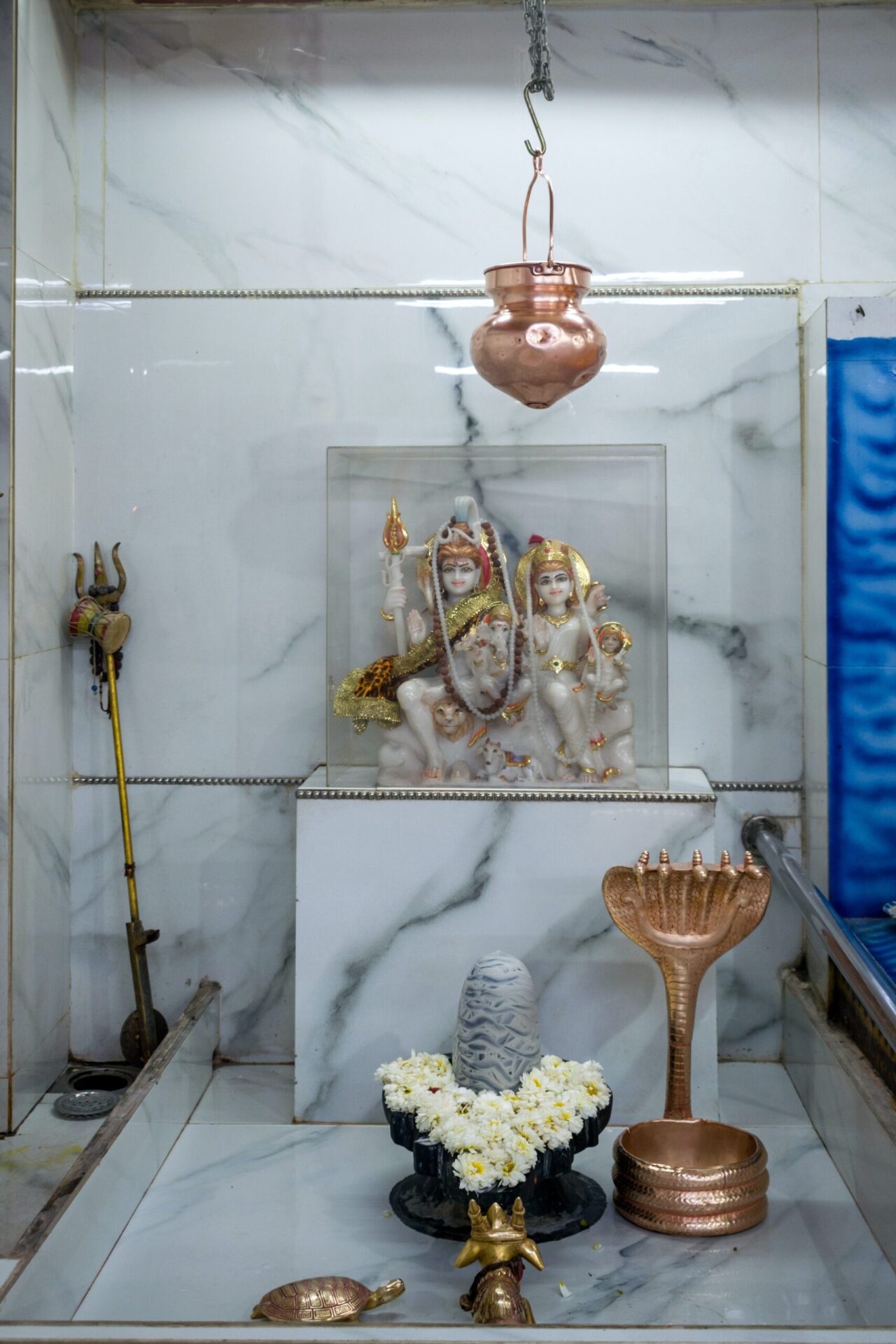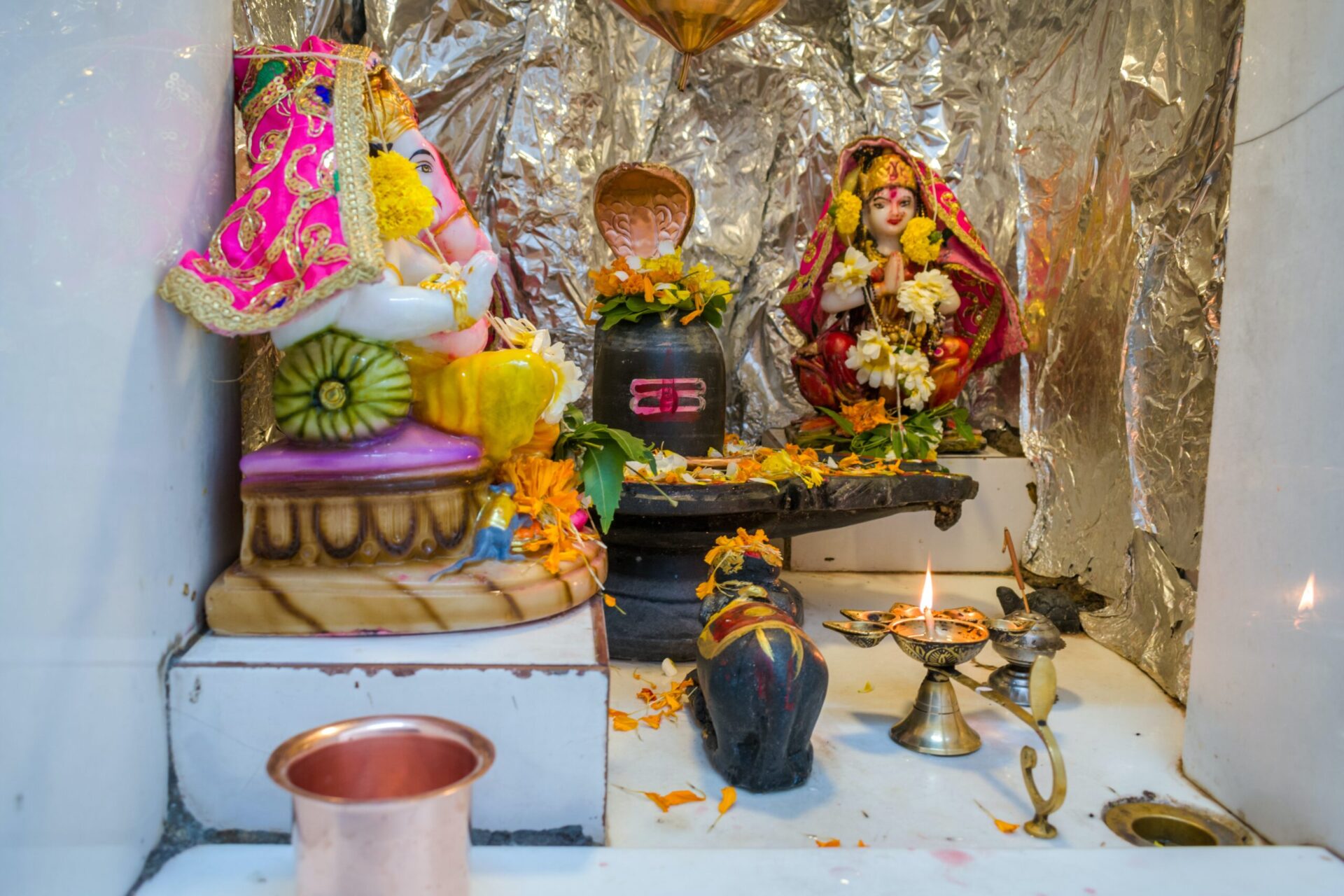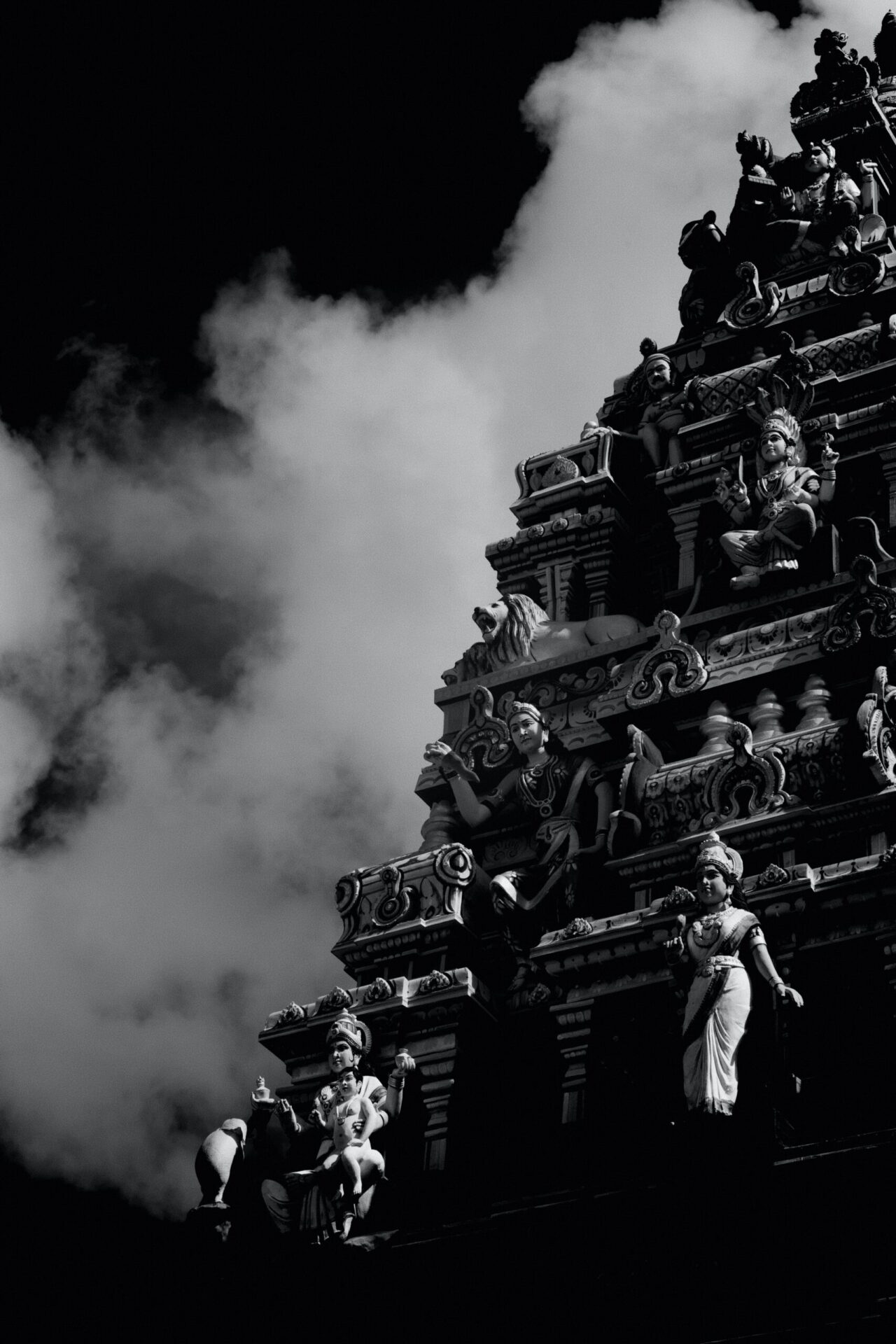Shiva, the mesmerizing deity of Hinduism, embodies multiple facets of existence. Revered as the destroyer and transformer, Shiva symbolizes the constant cycle of creation, preservation, and dissolution. Known as the supreme yogi, Shiva is the ultimate source of cosmic energy and represents the forces of destruction that pave the way for new beginnings and growth. As a compassionate and benevolent deity, Shiva encompasses qualities of wisdom, self-discipline, and transcendence, making him a beacon of hope and guidance for millions of devotees worldwide. Discover the intriguing depths of Shiva’s divine essence and unravel the profound significance behind his myriad forms and symbols.
Table of Contents
Shiva in Hindu Tradition
Shiva holds a significant place in Hinduism, being one of the most revered deities in the religion. His importance stems from his various roles and symbolism, which are intricately woven into the Hindu belief system. From being the god of destruction to the lord of dance, Shiva embodies multiple facets that hold profound philosophical implications and spiritual teachings. Let us explore the different aspects of Shiva and understand his significance in Hindu tradition.
Importance of Shiva in Hinduism
Shiva’s importance in Hinduism cannot be overstated. As one of the principal deities, he is revered and worshipped by millions of devotees worldwide. Shiva represents aspects like time, transformation, destruction, and the ultimate truth. His role as a higher power who governs the universe resonates deeply with Hindus, who seek his blessings for guidance and spiritual enlightenment.
Role of Shiva in Creation and Destruction
One of Shiva’s primary roles is that of the god of destruction. While destruction may seem negative, it holds immense significance in Hindu cosmology. Hinduism acknowledges the cyclical nature of life, where creation and destruction go hand in hand. Shiva’s role in the life cycle is to bring about the necessary destruction that paves the way for new beginnings. It symbolizes the constant flux of the universe and serves as a reminder of the impermanence of all things.
Shiva as Part of the Hindu Trimurti
Shiva is also an integral part of the Hindu Trimurti, along with Brahma and Vishnu. The Trimurti represents the three main aspects of the divine: creation, preservation, and destruction respectively. Shiva’s inclusion in this trinity highlights the significance of his role in the cosmic order. As the destroyer, he complements Brahma, the creator, and Vishnu, the preserver. Together, they maintain the delicate balance necessary for the functioning of the universe.

Shiva as the God of Destruction
Shiva’s role as the god of destruction goes beyond mere physical devastation. It encompasses the destruction of ignorance, ego, and attachment to material desires. In Hindu philosophy, this destruction is seen as essential for self-realization and spiritual growth. By demolishing these perceived barriers, Shiva clears the path for individuals to attain enlightenment and transcend the limitations of worldly existence.
Symbolism Behind Destruction
The symbolism behind Shiva’s destruction is profound. It represents the shedding of old patterns, attachments, and illusions that inhibit personal growth. In Hindu mythology, Shiva is often depicted with matted hair, snakes coiled around his body, and a fierce expression. These visual representations signify the wild and untamed nature of destruction, reminding believers that they must confront their own inner demons to find true liberation.
Contrasting Shiva’s Destructive Nature
Contrary to the destructive image often associated with Shiva, his nature is not solely focused on annihilation. While he represents the necessary destruction for rebirth and renewal, Shiva is also a compassionate and benevolent deity. He is often depicted as an embodiment of love, grace, and mercy. This contrasting portrayal highlights the multidimensional nature of Shiva, emphasizing the importance of balance between creation and destruction.
Shiva as The Transformer
Beyond destruction, Shiva is revered as the ultimate transformer. His transformative power extends to every aspect of existence, including spiritual growth. Shiva is believed to possess the ability to transform ordinary experiences into profound realizations and awakenings. By invoking his transformative energy, individuals can break free from the shackles of ignorance and delusion, paving the way for spiritual enlightenment.

Understanding Shiva as the Transformer
Shiva’s role as the transformer is deeply rooted in his association with the cosmic dance, known as Tandava. This energetic dance symbolizes the rhythmic and harmonious flow of creation, preservation, and destruction. Shiva’s Tandava dance represents the eternal cycle of life, where everything is in a perpetual state of transformation. It encourages individuals to embrace change and seek personal growth through continual transformation.
Influence on Spiritual Transformation
Shiva’s transformative power has had a profound influence on spiritual practices and philosophies. Many seekers of truth and spiritual aspirants draw inspiration from Shiva’s ability to catalyze inner transformation. Through his teachings, devotees learn to let go of attachments, embrace change, and evolve spiritually. Shiva’s influence extends to various spiritual traditions and paths, inspiring individuals to embark on their own transformative journeys.
Representations of Shiva in Art and Sculpture
Shiva’s transformative energy is vividly depicted in the artistic representations and sculptures dedicated to him. One of the most iconic depictions of Shiva is that of Natraj, the cosmic dancer. Natraj symbolizes the dynamic energy of the universe and the cyclical nature of existence. Shiva’s dance is portrayed with great grace and fluidity, capturing the essence of transformation and the eternal rhythm of life.
Shiva as the Lord of Dance
Shiva’s dance, often referred to as Nataraja, holds deep philosophical implications. It represents the cosmic dance of creation, preservation, and destruction, performed by Shiva himself. This dance is not merely a physical act but also a metaphor for the intricacies of the universe and the interplay of its various forces. It serves as a reminder that everything in existence is interconnected and part of a larger cosmic dance.

Understanding Nataraj, the Cosmic Dancer
Nataraj’s depiction showcases Shiva standing in dynamic motion, with one leg lifted and the other grounded on a dwarf-like figure, symbolizing ego. The outstretched arms represent the eternal flow of energy, while the flame in one hand signifies destruction and the drum in another represents creation. The whole image signifies the perpetual movement and transformation that encompasses the cosmos.
Connection with Aesthetics
Shiva’s association with dance, music, and aesthetics also underscores his role as the lord of yoga. The expressive beauty of his dance and the harmonious rhythm it embodies evoke a sense of transcendent joy and spiritual ecstasy. Shiva’s dance inspires individuals to seek a deeper connection with the divine through artistic expression and creative pursuits. It highlights the integral role of aesthetics in spiritual practice and the pursuit of inner transformation.
Shiva as the Lord of Yoga
Yoga, with its emphasis on physical and spiritual discipline, has its roots in the teachings of Shiva. As the lord of yoga, Shiva is regarded as the ultimate yogi and the original source of this ancient practice. His profound insights into the nature of existence and the human mind have shaped the philosophy and techniques of yoga. Shiva’s teachings continue to inspire yogis and seekers to explore the depths of their consciousness and attain union with the divine.
Contribution of Shiva to Yoga Philosophy
Shiva’s contribution to yoga philosophy extends beyond physical postures and breathing exercises. His teachings delve into the nature of consciousness, meditation, and the ways to attain spiritual liberation. Shiva’s insights on the interplay between the mind, body, and spirit provide a comprehensive framework for spiritual seekers to navigate their inner journey. His wisdom continues to influence and guide practitioners of yoga to this day.
Shiva as the Teacher of Yoga
In Hindu mythology, Shiva is revered as the first and foremost guru. He is believed to have imparted the knowledge of yoga and spiritual wisdom to his disciples, ensuring the transmission of ancient teachings to future generations. Shiva’s role as the teacher of yoga symbolizes the importance of guidance and mentorship on the spiritual path. He inspires individuals to seek guidance from knowledgeable teachers and embrace the wisdom passed down through generations.
Shiva’s Role in Hindu Spiritual Practice
Shiva’s influence extends to various aspects of Hindu spiritual practice. Numerous rituals, prayers, and practices are dedicated to honoring and seeking the blessings of Shiva. Devotees often undertake pilgrimages to Shiva temples, considered sacred spaces for communion with the divine. The chanting of mantras like “Om Namah Shivaya” and the observance of fasts on specific days are common practices associated with Shiva worship.
Symbolism of Shiva
Shiva is adorned with several symbolic elements that convey deeper meanings and spiritual teachings. These symbols add layers of significance to his persona and serve as visual representations of his divine attributes. Let us explore a few prominent symbols associated with Shiva.
Shiva’s Trident, The Emblem of Sovereignty
The trident, also known as Trishula, is one of Shiva’s iconic symbols. It represents the three fundamental aspects of existence: creation, preservation, and destruction. The trident symbolizes Shiva’s supreme authority and sovereignty over the cosmic order. It signifies his power to create, sustain, and bring about transformation.
The Damru and Its Significance
The damru, a small hourglass-shaped drum, is another symbol associated with Shiva. When played, it creates a rhythmic sound that represents the primordial sound of creation, “Om.” The damru signifies the cosmic vibrations that permeate the universe and serves as a reminder of the eternal rhythm of life.
Third Eye of Shiva
Shiva’s third eye, also known as the “eye of wisdom,” represents his insight and awareness beyond the physical realm. It symbolizes the ability to perceive the inner truth, see beyond illusion, and destroy ignorance. Shiva’s third eye signifies the depth of wisdom and intuition that can lead to profound spiritual awakening.
The Crescent Moon Adornment
Shiva is often depicted with a crescent moon adorning his matted hair. This symbolizes the waxing and waning of the lunar cycle and the cyclic nature of existence. The crescent moon also represents the cool, illuminating light of knowledge and spirituality. It reminds believers of the need for balance between the material and spiritual realms.
Shiva as Ardhanareeswara
Ardhanareeswara is a unique representation of Shiva as the divine union of masculine and feminine energies. This composite deity symbolizes the synthesis of opposites and the harmonious balance of the masculine and feminine principles within creation. Ardhanareeswara represents the inseparable nature of Shiva and his consort Parvati, highlighting the interdependence and complementary roles of both genders.
Concept of Ardhanareeswara
The concept of Ardhanareeswara celebrates the inherent unity and interconnection of masculine and feminine energies. It emphasizes the importance of recognizing and embracing the divine feminine within the divine masculine and vice versa. Ardhanareeswara reflects the belief that both aspects are necessary for the functioning of the universe and the attainment of spiritual wholeness.
Symbolism of Ardhanareeswara
The symbolism of Ardhanareeswara conveys profound spiritual teachings. The male form of Shiva represents pure consciousness, while the female form of Parvati symbolizes energy and creative power. The merging of these aspects in Ardhanareeswara signifies the integration of opposites and the harmony required for spiritual awakening. It serves as a reminder that unity, rather than separation, is the ultimate truth.
Shiva’s Representation of Duality
Shiva’s representation as Ardhanareeswara also signifies the transcendence of duality. While the union of masculine and feminine energies is emphasized, it simultaneously points to the underlying oneness beyond dualities. By embracing both aspects within, individuals can transcend the limitations of gender and embrace the divine essence that permeates all of creation.
Shiva’s Consort and Kids
Shiva’s lore is incomplete without acknowledging the role of his consort Parvati and their two sons, Ganesh and Kartikeya. Each member of Shiva’s divine family holds unique significance in Hindu mythology and provides valuable lessons on the importance of familial bonds and divine relationships.
Role of Parvati, Shiva’s Consort
Parvati, also known as Shakti, is Shiva’s primary divine consort. She represents the divine feminine energy and serves as the creative force of the universe. Parvati’s unwavering devotion and love for Shiva are revered, symbolizing the deep bond between spouses and the power of divine love. She is often depicted as an embodiment of strength, compassion, and nurturing qualities.
Shiva’s Two Sons: Ganesh and Kartikeya
Ganesh, the elephant-headed deity, and Kartikeya, the god of war, are Shiva and Parvati’s two sons. Ganesh is widely worshipped as the remover of obstacles and the harbinger of good fortune. He exemplifies wisdom and intellect, reminding believers to seek knowledge and overcome challenges. Kartikeya, on the other hand, represents courage, valor, and discipline. His legend inspires individuals to face adversity with bravery and determination.
Importance of Family in Shiva’s Lore
The familial relationships within Shiva’s lore emphasize the significance of family in Hindu tradition. Shiva’s unconditional love and partnership with Parvati serve as a model for harmonious and balanced relationships. The presence of Ganesh and Kartikeya teaches the importance of familial bonds and their role in personal and spiritual growth. Shiva’s divine family represents the interconnectedness of all beings and underscores the divine nature within human relationships.
Worship of Shiva
The worship of Shiva is an integral part of Hindu religious practice. Devotees express their reverence and seek blessings from Shiva through various means, including pilgrimages, rituals, and observances. Let us explore the different aspects of Shiva worship and its significance in Hindu tradition.
Shiva Temples and Their Significance
Shiva temples are sacred spaces dedicated to the worship of Shiva. They serve as focal points for spiritual communion and devotion. These temples are adorned with intricate sculptures and carvings representing the myriad forms and aspects of Shiva. Pilgrimages to these temples offer devotees an opportunity to deepen their connection with the divine and seek solace and guidance.
Festivals Associated with Shiva
Various festivals associated with Shiva are celebrated with great enthusiasm and devotion by his devotees. Maha Shivaratri, the Great Night of Shiva, is one such festival that holds immense significance. Devotees observe fasting, perform rituals, and engage in meditation and prayer throughout the night to honor and seek the blessings of Lord Shiva. Kumbh Mela, an ancient pilgrimage festival, also witnesses millions of devotees gathering to take a dip in sacred rivers, symbolizing spiritual purification and seeking Shiva’s grace.
Practices and Rituals of Shiva Devotees
Devotees of Shiva engage in various practices and rituals to express their devotion and seek spiritual elevation. Chanting of sacred mantras like “Om Namah Shivaya” is a common practice among Shiva devotees. Fasting, meditation, and performing puja (ritual worship) are also prevalent ways to honor Shiva. These practices are believed to purify the mind, deepen spiritual connection, and bring blessings and grace from the divine.
Shiva in Contemporary Interpretations
Shiva’s influence extends beyond the realm of religion and spirituality. His presence can be seen in popular culture and has inspired various modern spiritual movements. Let us explore how Shiva has made a lasting impact on contemporary interpretations of divinity and the human experience.
Shiva in Popular Culture
Shiva’s iconic image and his multifaceted nature have made him a popular figure in contemporary culture. From literature to films, his presence can be felt in various art forms. Shiva’s representation in pop culture not only showcases his universality but also reflects society’s fascination with his power, mystique, and symbolism.
Influence of Shiva on Modern Spiritual Movements
Shiva’s teachings and philosophies continue to influence modern spiritual movements and New Age practices. His emphasis on self-realization, transformation, and the pursuit of inner truth resonate with seekers of various backgrounds. Shiva’s teachings have found their way into practices such as meditation, energy healing, and mindfulness, where individuals draw inspiration from his wisdom to navigate their spiritual journeys.
Understanding Shiva Beyond Religion
While Shiva holds a significant place in the religious and spiritual aspects of Hinduism, his essence transcends religious boundaries. Shiva’s teachings embody universal truths and wisdom that can be appreciated by individuals from diverse faiths and belief systems. The depth of Shiva’s symbolism and the philosophical implications of his various roles make him a figure worthy of contemplation and exploration beyond the confines of religion.
In conclusion, Shiva’s significance in Hindu tradition is multifaceted and profound. From his role as the god of destruction and the transformer to his symbolism and representation in art and sculpture, Shiva embodies timeless wisdom and spiritual teachings. His teachings continue to inspire seekers of truth to delve into the depths of their consciousness and explore the interconnectedness of all existence. Whether worshipped as the lord of yoga, the cosmic dancer, or Ardhanareeswara, Shiva’s presence resonates with millions and serves as a guiding light on the path to spiritual enlightenment.